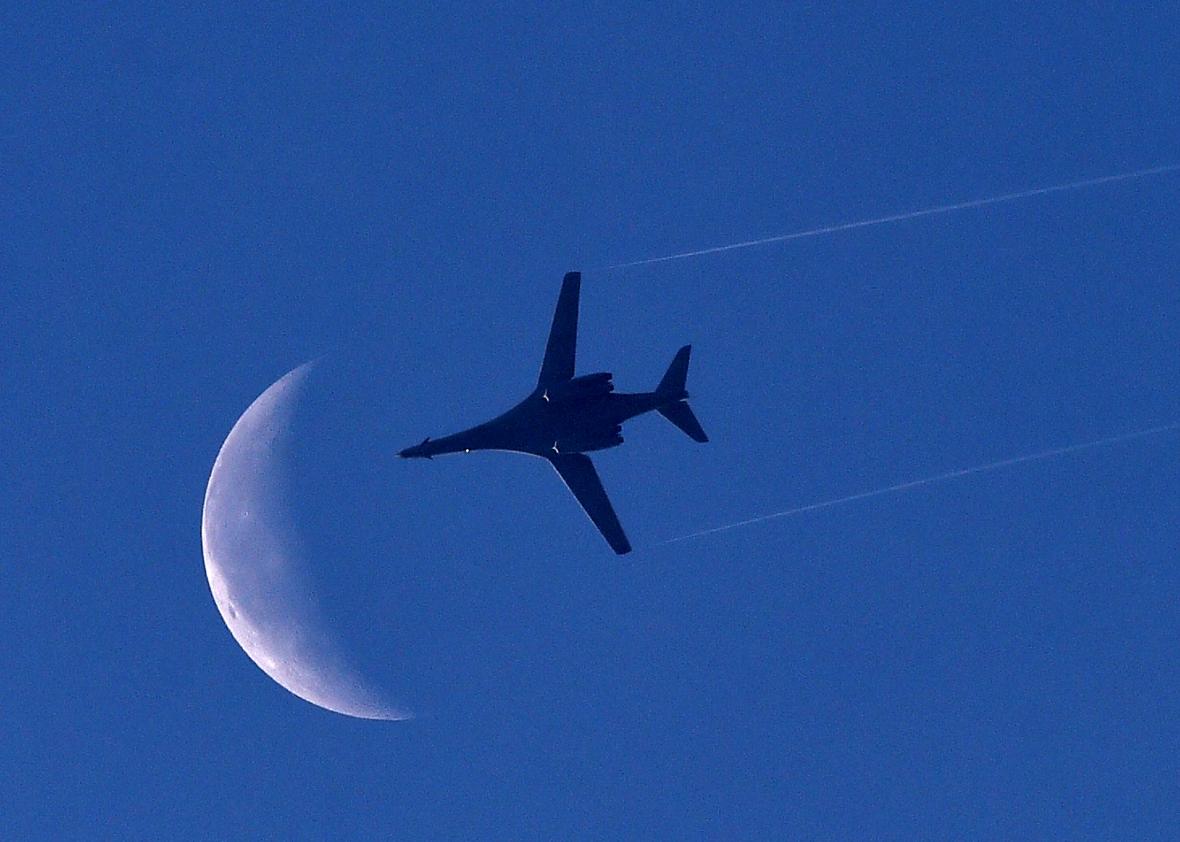How Russia Is Already Scuttling U.S. Plans in Syria

Photo by Aris Messinis/AFP/Getty Images
In July, Turkey and Jordan agreed to cooperate with the U.S. to set up and enforce aerial safe zones to protect civilians and rebels in the north and south of Syria. But the Financial Times suggested on Sunday that Russia’s new air campaign in Syria has effectively scuttled that plan. As analyst Justin Bronk of the Royal United Service Institute told the Financial Times, “The Russian forces now in place make it very, very obvious that any kind of no-fly zone … is now impossible, unless the coalition is actually willing to shoot down Russian aircraft.”
The Obama administration might not be too sad about the end of the safe zones. The Turkish government, as well as congressional hawks like Lindsey Graham and John McCain, have been calling for years for the establishment of no-fly zones in Syria enforced by U.S. military power to prevent Assad’s planes and helicopters from bombing civilians and rebel forces. The Obama administration, which has sought to avoid direct confrontation between U.S. and Syrian forces, has been skeptical about the idea, with national security spokesman Ben Rhodes arguing back in 2013 that the zones are not some type of silver bullet and that it would be “dramatically more difficult and dangerous and costly in Syria” than it had been in Libya.
Then, in July of this year, Turkey agreed to cooperate with the U.S. in the fight against ISIS, with Turkey allowing U.S. planes to use its bases for the first time. In exchange, Turkey, which has generally been more concerned about fighting Assad than ISIS, demanded the no-fly zone. After negotiations, the two sides agreed in general terms to set up an ISIS-free “safe zone” in a 60-mile strip along the Turkish-Syrian border between the border crossing at Kilis and the Euphrates River. U.S. officials said it would have “nearly the same effect” as a no-fly zone.
If you’re wondering what that means, you’re not alone. Civilians in the area were pretty confused too. No-fly zones, which the U.S. has previous helped enforce in Iraq under Saddam Hussein, and the Balkans as well as in Libya, are, in effect, a warning to another country’s air force that it will be engaged if it operates in a given area. But it was never exactly clear what the U.S. would do if Assad tried to drop bombs inside the safe zone, not a far-fetched scenario given his penchant for testing U.S. red lines.
The deployment of Russian jets and anti-aircraft systems to Syria makes it much less likely that anything resembling a no-fly zone will be established. If U.S. jets wouldn’t attack Syrian helicopters carrying barrels full of dynamite and nails, they certainly aren’t going to attack Russian Sukhois. Instead, the administration’s new plan in Syria, according to the New York Times, involves concentrating on the northeast of the country, around the ISIS capital, Raqqa, far from where Russia has been aiming its airstrikes. This new offensive could involve providing ammunition to rebel groups for the first time and ramping up the air campaign in the northeast. The Times notes that the “United States and Turkey continue detailed planning to use Arab militias to close a 60-mile stretch of border from the Euphrates River west to Kilis,” but it’s not clear if that still involves establishing a buffer zone or how it would be enforced.
The new plan seems fairly modest—U.S. airpower will support Kurds and a new Arab rebel force to advance to Raqqa and cut it off but not actually take it over. It certainly seems as if the administration has concluded that, with limited options to effect the situation in Syria in any positive way, the best it can do is keep ISIS’s growth contained as much as possible and avoid accidentally starting World War III by getting into a direct confrontation with Russia.
Of course, that’s not the easiest strategy to defend on the campaign trail. As Daniel Larison notes, even as the no-fly zone has started to seem less feasible, candidates, including not just Republicans Jeb Bush and Marco Rubio but also Hillary Clinton, have endorsed it as a strategy. (At a press conference last week, Obama dismissed Republican plans for Syria as “mumbo-jumbo.” The best he would say about his interventionist former secretary of state was that unlike her opponents, her ideas are “not half-baked.”)
Generally speaking, politicians love calling for no-fly zones. As I wrote in 2011, while they often involve shooting down another country’s planes or destroying anti-aircraft batteries, they are somehow seen as a softer form of military intervention, a “compromise in situations where the international community is demanding a response to ongoing violence, but full military intervention would be politically untenable.” It would be worth asking the candidates currently calling for one in Syria if they’d be willing to shoot down Russian planes to enforce it.

